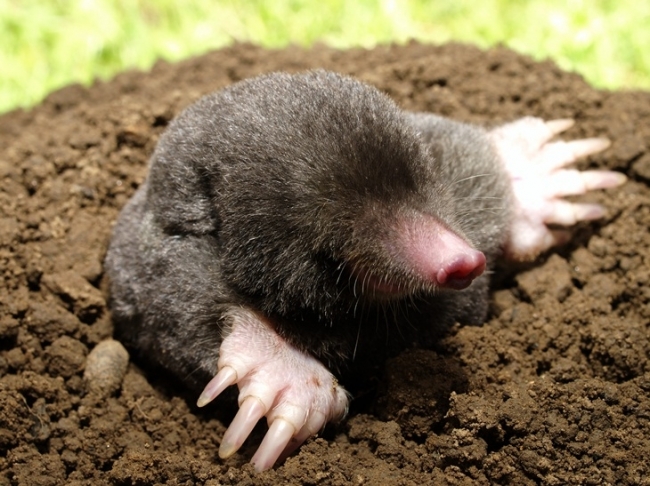
Moles inhabit Africa, Europe, Asia, North
America, and Australia. They are voracious,
continually burrowing in the ground for
food, for a mole must eat its weight in food daily.
This is accomplished by digging approximately
twenty-five feet of burrow per hour. Mole burrows
are close to ground surfaces and can cause
surface ridges. A mole's home is also recognized
by its large, central mound of earth. This mole hill
is created from the earth dug up in the mole's
search for food. There are twelve mole genera
worldwide, five of which inhabit the United States.
Types of Moles
Moles have pointy snouts, rudimentary eyes, velvety
fur, short legs, and powerful digging nails on
their front legs. Moles are nearly or totally blind;
however, their hearing is acute and they detect
sounds from great distances. Common garden
moles are six inches long with furless tails, and
have huge forelegs whose broad, thick nails
gouge out earth. The largest species in the United
States, Scapanus townsendii, is nine inches long.
Shrew moles, the smallest, are 3.5 inches long.
European moles inhabit grasslands and pastures
in the British Isles, continental Europe, and
Asia. They dig elaborate burrows that hold central
chambers with round connected galleries. Passageways
radiate in all directions from galleries
(for example, there will be a boltrun exit in case
of danger). Each burrow has a warmly lined nest
for the mole. Tunnels run from just below ground
level to 2.5 feet deep and may be 170 feet long.
European moles eat worms, beetle and fly larvae,
and slugs. They are active day and night, alternating
every four hours between digging or eating
and resting, and they live alone except when
mating.
Golden moles inhabit grassy forests, riverbanks,
mountains, and semidesert areas of Africa.
The smallest species is Grant's golden mole, 2.5
inches long, and the largest species is the giant
golden mole, 9 inches long. Their golden fur repels
water, keeping them dry while digging.
When burrowing, leathery pads cover their noses,
keeping dirt out. Burrowing allows foraging for
insects, larvae, earthworms, crickets, slugs, snails,
and spiders. Golden moles cannot see well and
find food by touch. Sometimes they come to the
surface (for mating, as an example). They live
alone and defend their homes when other moles-
even others of their own species-intrude.
Star-nosed moles, of eastern Canada and the
northeastern United States, are black-furred, five
inches long (excluding the tail) and weigh three
ounces. They live near water, swim well, and dig
in soil along shorelines. They burrow day and
night, foraging for earthworms, aquatic insects,
fish, and mollusks. Their nose tips hold a twentytwo-
tentacle, touch-sensitive star which is their
main sense organ. Star-nosed moles are solitary.
The Australian central desert holds the only
species of marsupial mole. Their bodies range
from 2.5 to 8.5 inches long, and they weigh from
0.3 to 6 ounces. Like other moles, they have short
legs and front paws holding digging claws.Abare
patch of skin atop each mole's nose pushes aside
dirt as it digs. They have yellow fur, small nose
slits, and no functioning eyes.
Marsupial moles burrowin soil near rivers and
grasslands in Australian desert. While burrowing,
they eat moths and beetle larvae. They do not
dig permanent burrows but travel widely, sleeping
in temporary burrows. They are solitary and
their females have marsupiums, to carry young.
Life Cycles of Moles
Life cycles are best known for the star-nosed, European,
and golden moles. Male and female starnosed
moles mate between February and April.
The female builds a nest of leaves and moss in her
burrow and has two to seven furless, blind, helpless
young after a six-week gestation. They develop
quickly, leave the nest in three weeks, and
can mate after ten months.
Male European moles enter the tunnels of females
to mate. After a five-week gestation, three
to seven blind, hairless young are born. The young
growfur, open their eyes, and leave the nest in five
weeks. European moles live for three years.
Male golden moles wishing to mate can attract
mates at any time of the year. Litters contain two
to three hairless young. They are two inches long,
blind, and weigh less than one ounce. After nursing,
when they weigh about 1.5 ounces, the young
leave the nest for good.
Moles are considered to be pests by farmers
and home gardeners, who think they eat plant
roots and kill crops. However, moles never eat
plants and perform a real service by killing grubs,
caterpillars, and insects. Nonetheless, farmers,
gardeners, and people with lawns consider them
nuisances and poison them or set traps in their
tunnels because they "spoil gardens and fields."
Mole Facts
Classification:
Kingdom: Animalia
Subkingdom: Bilateria
Phylum: Chordata
Subphylum: Vertebrata
Class: Mammalia
Order: Insectivora
Family: Talpidae, with twelve genera and twentynine
species, including Scalopus aquaticus
(common garden mole), Scapanus townsendii
(largest U.S. mole), Neurotrichus gobbsi (shrew
mole), Talpa europaea (European mole), Condylura
cristata (star-nosed mole), Notoryctes
typhlops (marsupial mole)
Geographical location: Europe, Asia, North
America, and Australia
Habitat: Most inhabit grasslands and pastures,
though some live in freshwater
Gestational period: Two to six weeks
Life span: Three to six years
Special anatomy: Huge forelegs with broad
nails; leathery pads or tentacle rings covering
nasal passages
Other popular Animals
Photo Gallery of - Mole
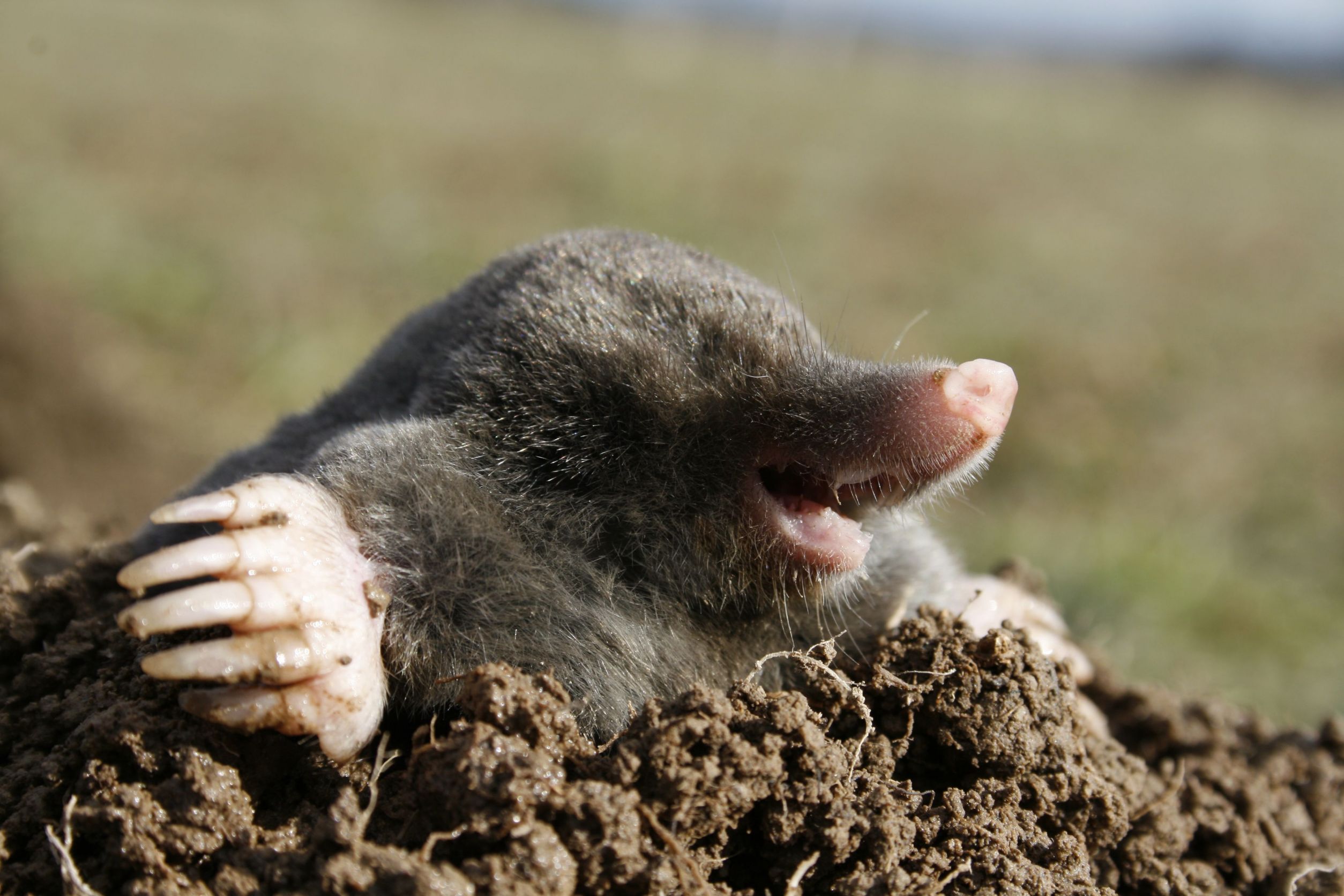
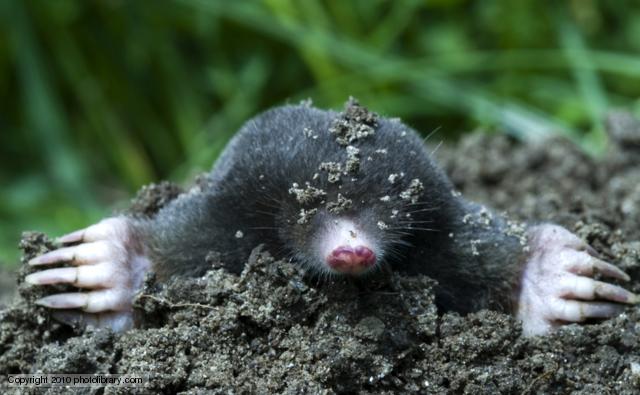
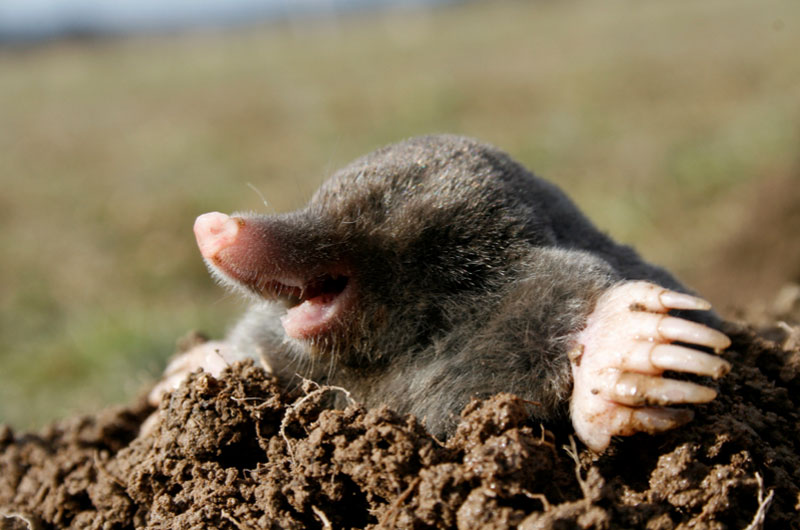


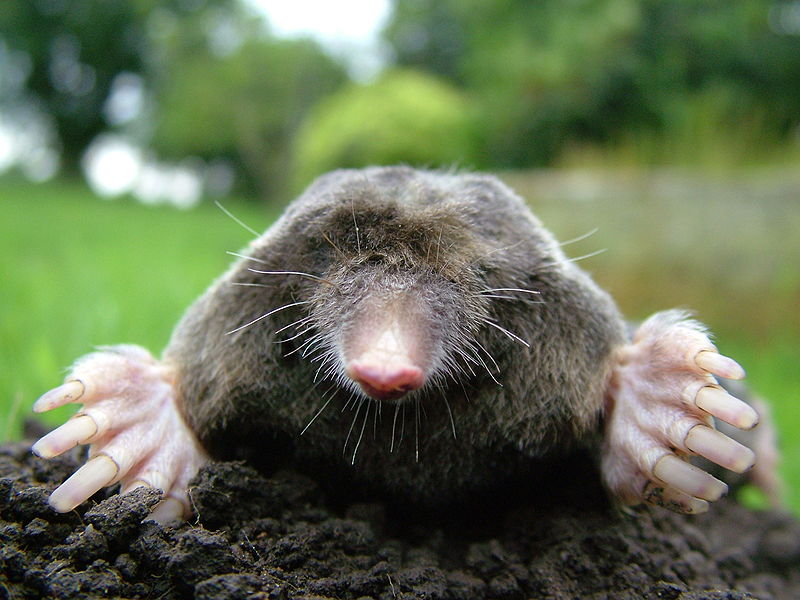

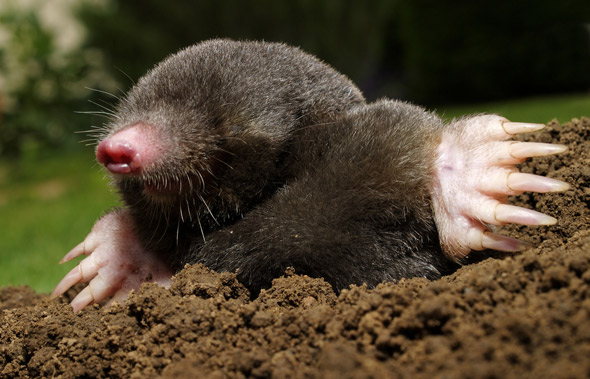
 Animalia Life
Animalia Life